Ben Durham’s Gear Guide
for Video Producers
“How can I make videos like yours?” is something I get a lot of.
Real talk: time and practice is how you get better with anything. Gear only starts mattering once you’ve gotten started. A phone is all you need at first. A bit more specifically: start with pre-production and planning before anything else. After that, make some videos! You don’t even need to put them out into the public eye; just start and finish as many videos as you can, from beginning to end. And THEN, once you’ve started to figure out where the friction points in your creative process are, you can think of getting to gear (which is what this page is really about).
No matter if you’re just starting or are already a pro, the gear below is what I believe can work for you; whether you’re wondering what I use right now or what you might use to get similar quality. I’ll let you know now that what I use to film currently, in 2025.
In the coming months, I’ll update this page and create some curated kits of gear for various levels of filmmaking skill.
You can skip around what I have for now using this table of contents!
Table of contents
DISCLAIMER
Most links on this Gear Guide page are affiliate links, meaning I earn a small percentage from purchases you make using these links. Some links might not work in your location. I use most of what’s included below. Otherwise, I’m familiar with the brands enough that I feel that I can endorse them. If I haven’t used the product or don’t know the brand well but feel strongly about the product after research and perspective from fellow filmmakers, I’ll make sure to indicate that, so you’re aware before investing. Whenever possible, I’ll try to include a cheaper alternative to our suggestion in case you aren’t quite ready for the larger ticket item!
My Current Gear
For as long as you’ve been alive, marketing (and YouTubers) have told you that you need the latest and greatest gear to be able to tell a good story. Of course, it helps… but it’s mostly not true. Great gear will help lower the friction points that get in the way of you and your creative process once you have one, for sure, but if you haven’t already: just START CREATING! You’ll learn along the way.
Personally, I don’t actually use the “latest and greatest” filmmaking gear, even though I run a video production company. You can 100% tell stories and get great quality audio and visuals with most gear nowadays; you just have to put the time in to learn. Camera sensors and equipment are all very similarly capable – but knowing how and when to use certain equipment is what matters to both your clients and audience. But story and value to your audience are key before all else.
Pro tip: buy used gear! Most of the equipment that I use on a daily basis is from Facebook Marketplace. Some is new gear, but most is used. Stuff that’s a year old isn’t suddenly “old and useless!”
Movies have been shot on iPhones, 5D Mark II, FX3s, Sony’s, Canon’s, Nikon’s, Panasonic’s, and I’m sure anything else you can think of. They even used a Canon 5D Mark II for some POV shots in the original Avengers movie! I bet you didn’t even notice! But you probably noticed the GoPro shots in the first Hobbit movie. Oh man, that was awful-looking. ANYWAY…
Video Equipment
My two main cameras are the Canon R6 and Canon R7. I actually prefer using the R7, even though it’s a Super-35, 1.6x crop sensor vs the R6, which is a full-frame beast. Why? Because I find the arbitrary 30-minute recording limit inhibits my workflow, along with the overheating issue for longer shoots (although I’ve never run into it, I’ve had to continuously blow on my camera during longer interviews to prevent it from nuking itself and shutting off lol). I’d 100% not go with the Canon R6 Mark I and instead go with the Canon R6 Mark II because it’s better and DOES NOT HAVE A 30-MINUTE RECORDING LIMIT!
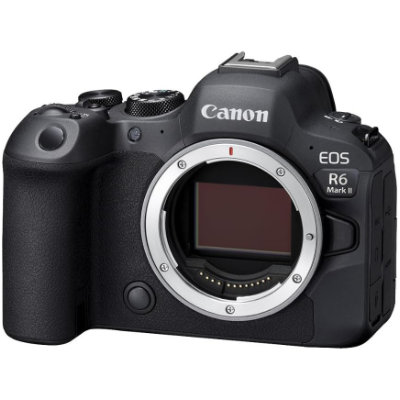
CAMERA
Canon R6 Mark II
If you’re looking for a Full-Frame camera, this is the one that I recommend, personally. It’s got a great ecosystem of glass (lenses) behind it and is great for both photos and video (aka a hybrid camera).
As mentioned in the paragraphs above, I have the R6 Mark I which has a 30-minute record limit, so get this Mark II instead which doesn’t have that limitation!
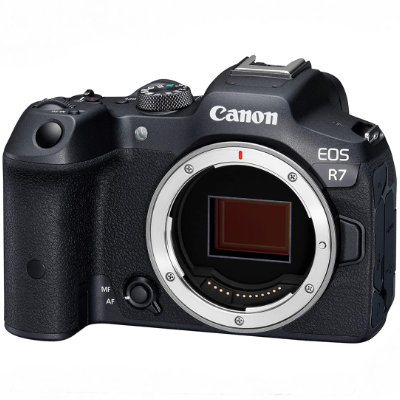
CAMERA
Canon R7
Currently, my favourite camera to use, because it WORKS exactly how I want it to! It doesn’t get in the way of my creative process.
Is it the best for low-light? No. Is it a Super-35 sensor that most movies in the history of humanity have been shot on? Yep! It also sips power and doesn’t overheat, no matter what you throw at it. This is the camera that I use to shoot my YouTube videos.
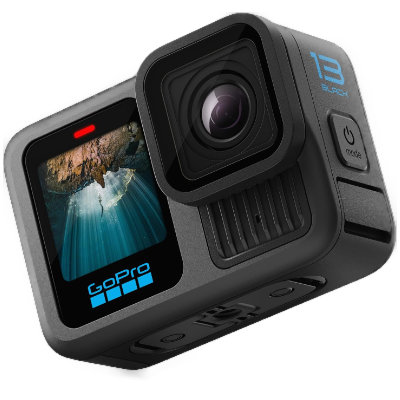
ACTION CAMERA
GoPro HERO13
Because I’m on my ebike more than I’m in a car, I use action cameras more than the average person. For most people, they really don’t need to be part of your filmmaking gear and often go underutilized. If you’re going to go for one, I’d get a used one that’s one or two years old; that’s what I do (currently rocking the GoPro11).
My FAVOURITE PART about this camera is the one-click start-and-stop recording feature and INSANE image stabilization. They’re game changers.
A 360 camera would be nice, but at the same time, the footage is harder to process and use.
Audio Equipment
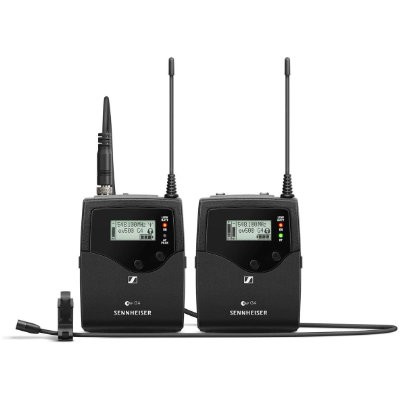
WIRELESS MIC
Sennheiser EW 512P G4
I have the older G3 setup from over 10 years ago. That’s a testament to how well these are built!
I LOVE robust, well-built equipment and this is no exception. They run on four AA batteries total, so they’ll keep kicking for decades. I use rechargeable AA batteries and they last for more than 12 hours. I never worry.
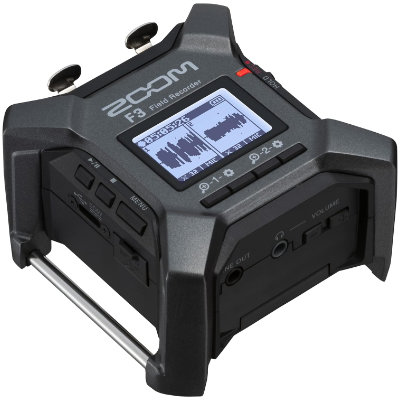
FIELD RECORDER
Zoom F3
This li’l beast is a force to be reckoned with. Its noise floor is so low that I’ve NEVER heard it and probably never will.
Love that it runs on two AA batteries total, so it’ll keep kicking for decades. I use rechargeable AA batteries and they last for more than 2 hours. I just keep a spare pair in my bag per shoot.
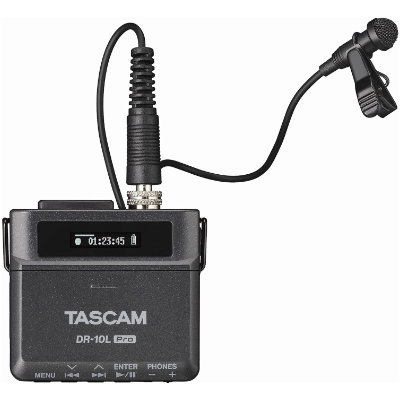
FIELD RECORDER
TASCAM DR-10L Pro
These are local-recording audio capturing systems that are AMAZING because they’ll last for years to come, specifically because of their AAA battery compartment.
I’m still using the original DR-10L (24-bit) packs but would go with the 32-bit versions if I were in the market for them again. A clap at the beginning of recording, and you’re set for syncing! Can’t monitor them, though, which is a downside. NEVER any signal interference, though.
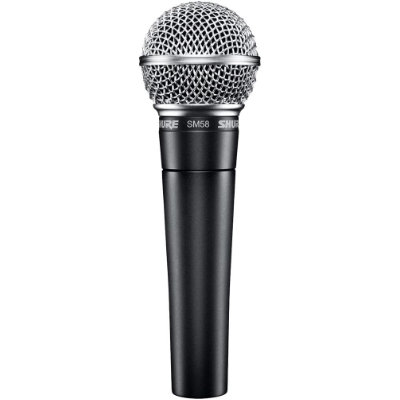
MICROPHONE
Shure SM58
This 1966 dynamic microphone is a TANK. Everyone knows it. Again, not perfect, but it’s got a sound that everyone knows.
For most of my YouTube videos, I replace the top wire filter with the Shure A2WS Windscreen, to get a look closer to the stereotypical overkill SM7B youtuber mic. More on this in the podcast section of this page.
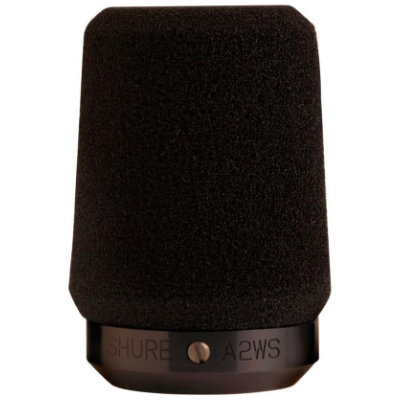
WINDSCREEN
Shure A2WS Locking Windscreen
This looks a bit nicer than the silver SM58 ball popfilter for podcasts and YouTube videos, because people like the look of the SM7B, and this helps it look like that haha. It’s actually not even that good at stopping plosives if you get too close to it.
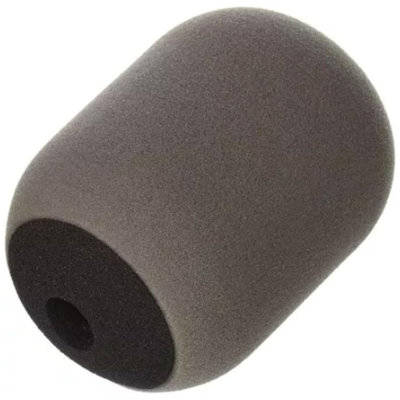
STAND
Shure A81WS Large Windscreen
This holds the SM58s and SM57s for both my YouTube videos and Podcast episodes.
Lighting Equipment
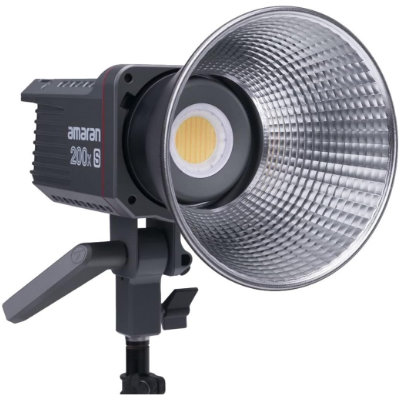
COB LIGHT
Amaran 200X S bi-colour LED light
This is my main key light that’s most noticeable in my “studio shot” on YouTube (with the blue-wall background). Got this on a Black Friday sale. I typically diffuse the light coming out of this with the Neewer 120cm Softbox.
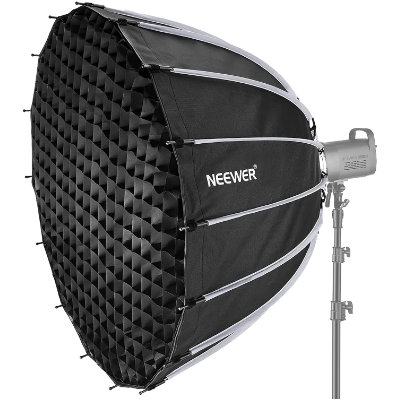
DIFFUSION
Neewer 120cm Parabolic Softbox
This is the softbox that I most often put on the Amaran 200X S light. It also has a grid which help prevent spill… a bit. Not much, realistically. Side note: this softbox is so large that it causes a bit of sag with the 200X light. No damage has been done, with over 2 years of use, though!
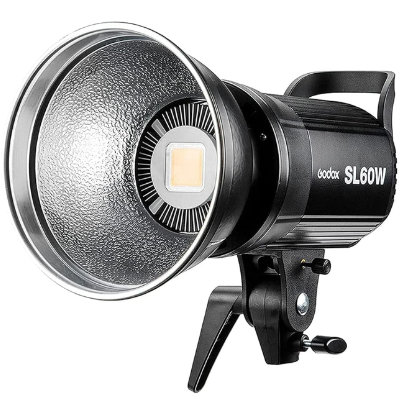
COB LIGHT
Godox SL-60W
This is my secondary light. It’s a great starter light, but I use it around the house when filming YouTube videos with a more portable 36″ softbox on it for diffusion.
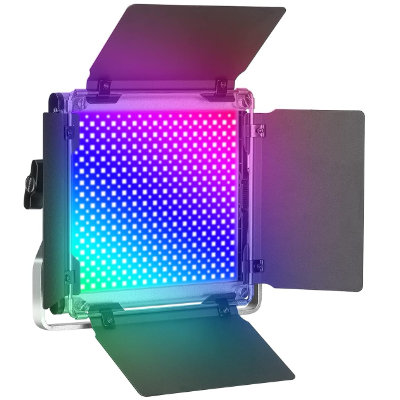
LED PANEL
Neewer 660 PRO RGB
This is my fill light, most noticeable in my “studio shot” on YouTube (with the blue-wall background). I keep it on a HUE mode with an orangey colour, coming from stage-right.
Acquired on FB Marketplace.
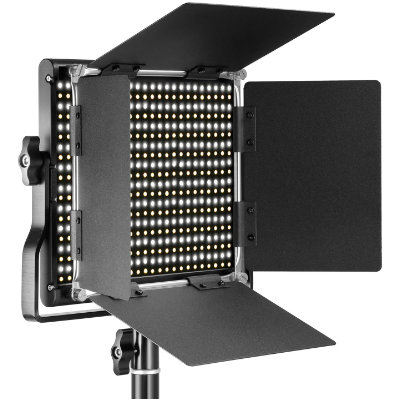
LED PANEL
Neewer 660 Bi-Colour
This is the softbox that I most often put on the Amaran 200X S light. It also has a grid which help prevent spill… a bit. Not much, realistically. Side note: this softbox is so large that it causes a bit of sag with the 200X light. No damage has been done, with over 2 years of use, though!
Purchased on Amazon.
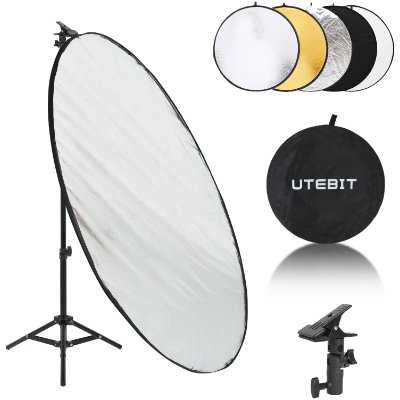
LIGHT MODIFIER
5-way collapsible multi reflector-diffuser disc
This is my secondary light. It’s a great starter light, but I use it around the house when filming YouTube videos with a more portable 36″ softbox on it for diffusion.
Acquired on FB Marketplace.
Supporting Accessories
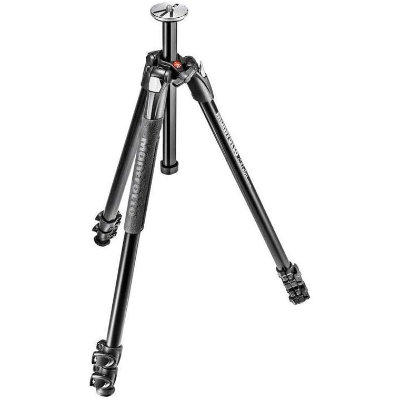
TRIPOD LEGS
Manfrotto Tripod Legs
Sturdy tripod legs are a great store of value… and will probably last you a lifetime!
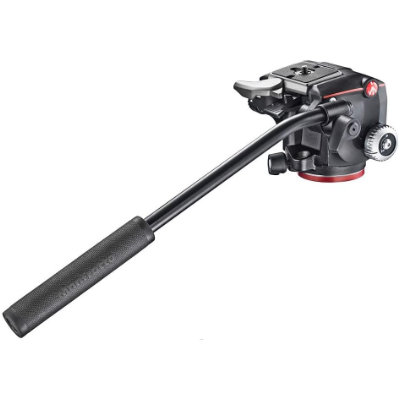
TRIPOD HEAD
Manfrotto Fluid Head
This holds the SM58s and SM57s for both my YouTube videos and Podcast episodes.
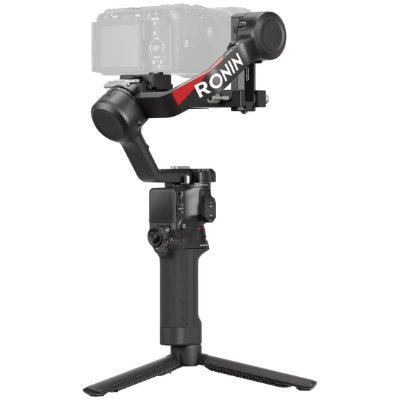
STABILIZER
DJI RS 4 3-Axis Gimbal
I have the DJI Ronin-S but that’s older now. I’d get a DJI RS 4 if I were to buy something again right now or upgrade. But if I were starting, I’d go with a DJI Ronin-SC, which is more than capable! It’s actually better than what I have right now haha.
You don’t need a gimbal to start! Get a tripod first.
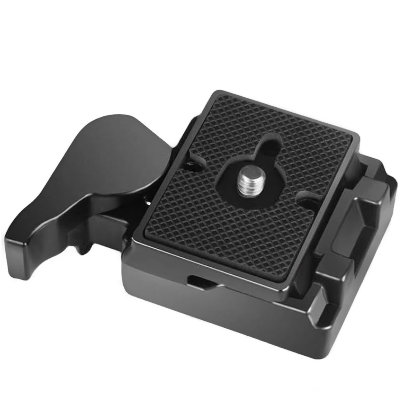
QUICK-RELEASE
323 RC2 Adapter, Plate
I started my video producing career without a quick-release system. I quickly learned that time is money. And how fast you miss out on shots if you don’t have a quick, easy, and effective quick release system.
I personally still love the RC2 plate system and think they’re superior to the ArcaSwiss adapter stystems. These work for small-to-medium cameras… but less so for large cinema cameras.
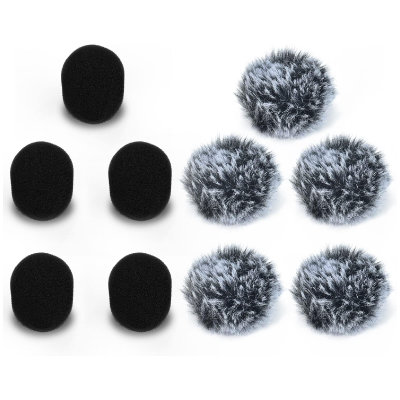
WIND MUFF
Wind Muff for Lavalier Mics
These fuzzy mic covers have no right being this good. You can see them being used during my ride-along videos on bicycles, which are VERY WINDY. But the audio comes back SO DANGFLAWLESS!
I put these windscreens on pretty much whenever I’m outside, just because windy audio can ruin an entire shoot.
Yes, they’re big and obvious, but it’s worth it for great audio, IMO.
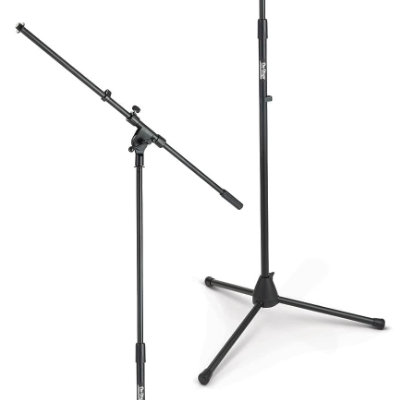
MIC STAND
Microphone Boom Stand
This holds the SM58s and SM57s for both my YouTube videos and Podcast episodes.
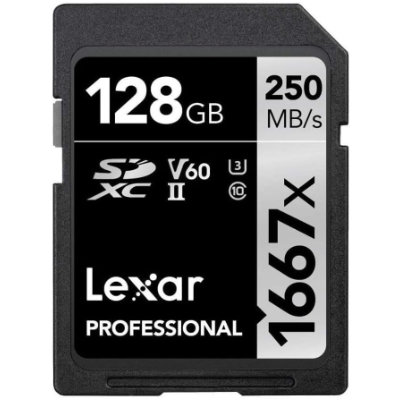
DATA STORAGE
Lexar 128GB SD Card
You can go with any of the main brands of SD cards BUT you don’t want to skimp out on read-write speeds. V60 should be good. Capacity-wise, 128GB to 256GB is totally fine for most cases.
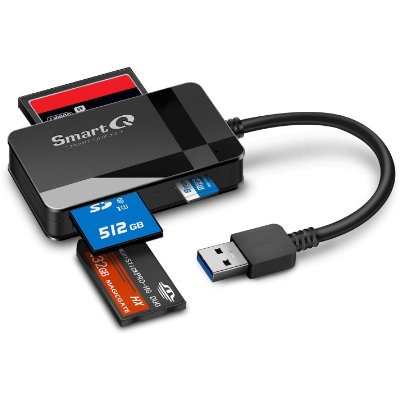
CARD READER
USB 3.0 Card Reader
Any card reader works. Higher speeds are nice but not all that important. Being able to jam a bunch of different types of data storage cards into is handy, though! At least Full-sized SD Cards (full-sized cameras) and Micro-SD (ie. GoPros) Cards.
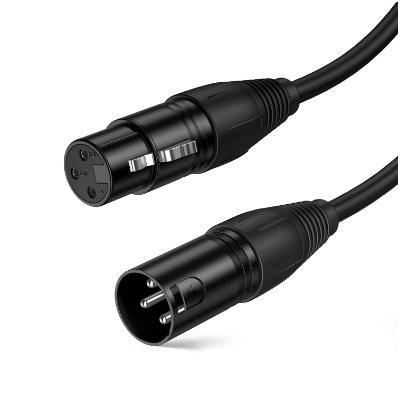
AUDIO CABLE
XLR Cables
Any old XLR cables are great. They’re robust, as long as you’re careful with their heads.
I use two 6-foot cables right now, but only because it works out. I’ll probably upgrade to a 10-foot cable. If you use a condenser mic on a boom pole or something, you might want a 20-foot or even a 30-foot XLR cable.
Check back in the future, I’ll update my gear.
This guide was originally created in June 2025. I’ll update it in the future, so check back!